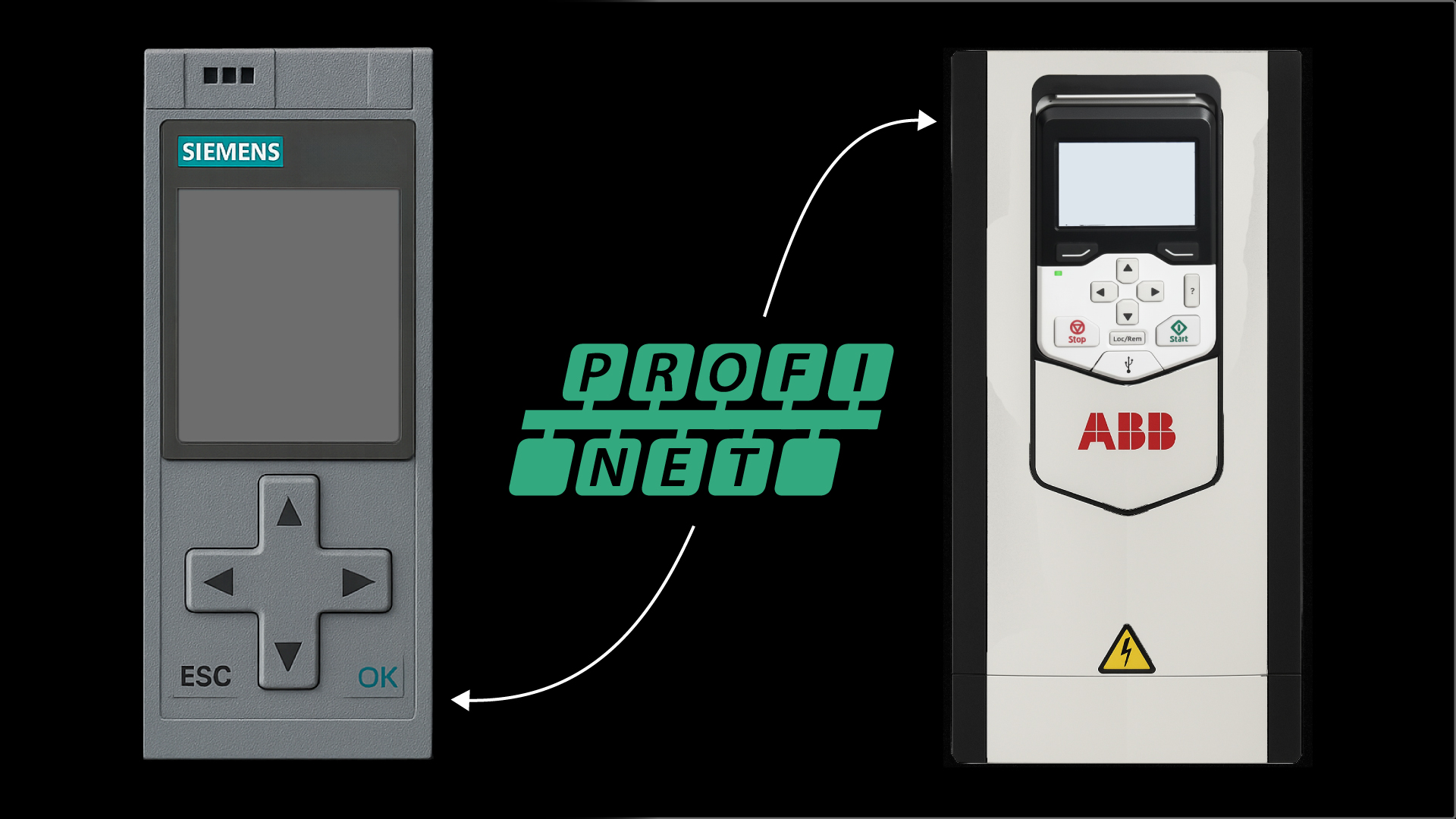Modern automation and control systems provide a wealth of choices for devices, actuators, PLC CPUs, and HMI stations. This provides a lot of flexibility for the automation engineer, but can pose a challenge in integrating the various devices most efficiently.
One of my favorite integrations is using the very versatile ABB ACS880 VFD in a Profinet network using the Siemens S7-1500 controller.
The ABB ACS880 variable frequency drive is a compact, stand-alone drive that comes in models that can service 0.37 kilowatt motors up to 6000 kilowatt motors. This is equivalent to a range of 1/2 Horsepower to 8000 Horsepower. Quite a range of applications!
ABB has other VFD drive series, including the ACS380 and ACS580. These models differ in their standard feature sets, with the ACS880 being the most feature-rich, including enhanced safety and reliability features and the availability of fieldbus connectivity, including Profinet.

ABB drive communication with Siemens PLC requires an ABB fieldbus module, called the FPNO-21 module, which provides a connection for the ACS880 to Profinet networks.
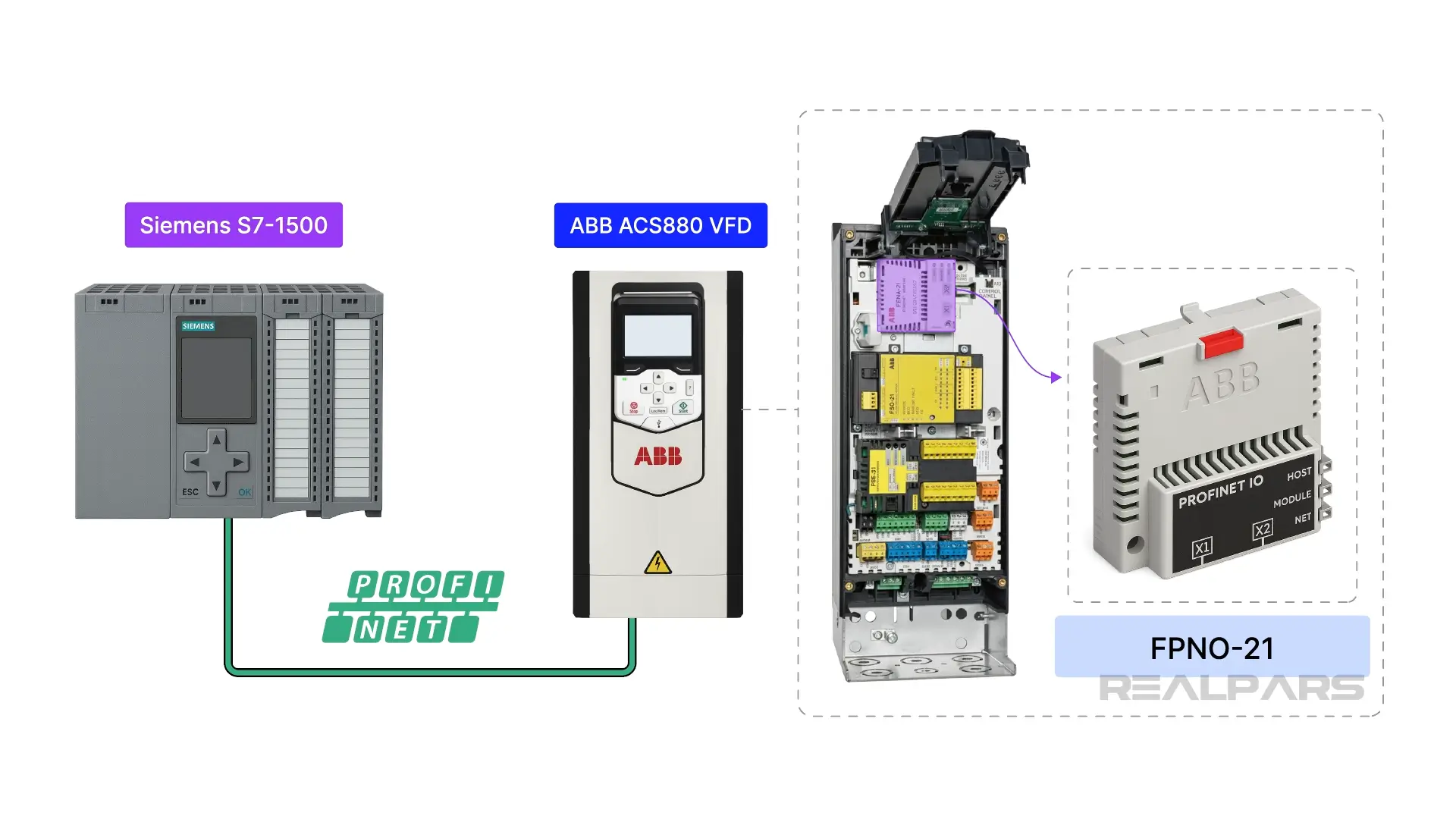
It supports Media Redundancy Protocol, which allows the two ports of the FPNO-21 module to work as an embedded network switch. This allows for many networking strategies, including ring topology.
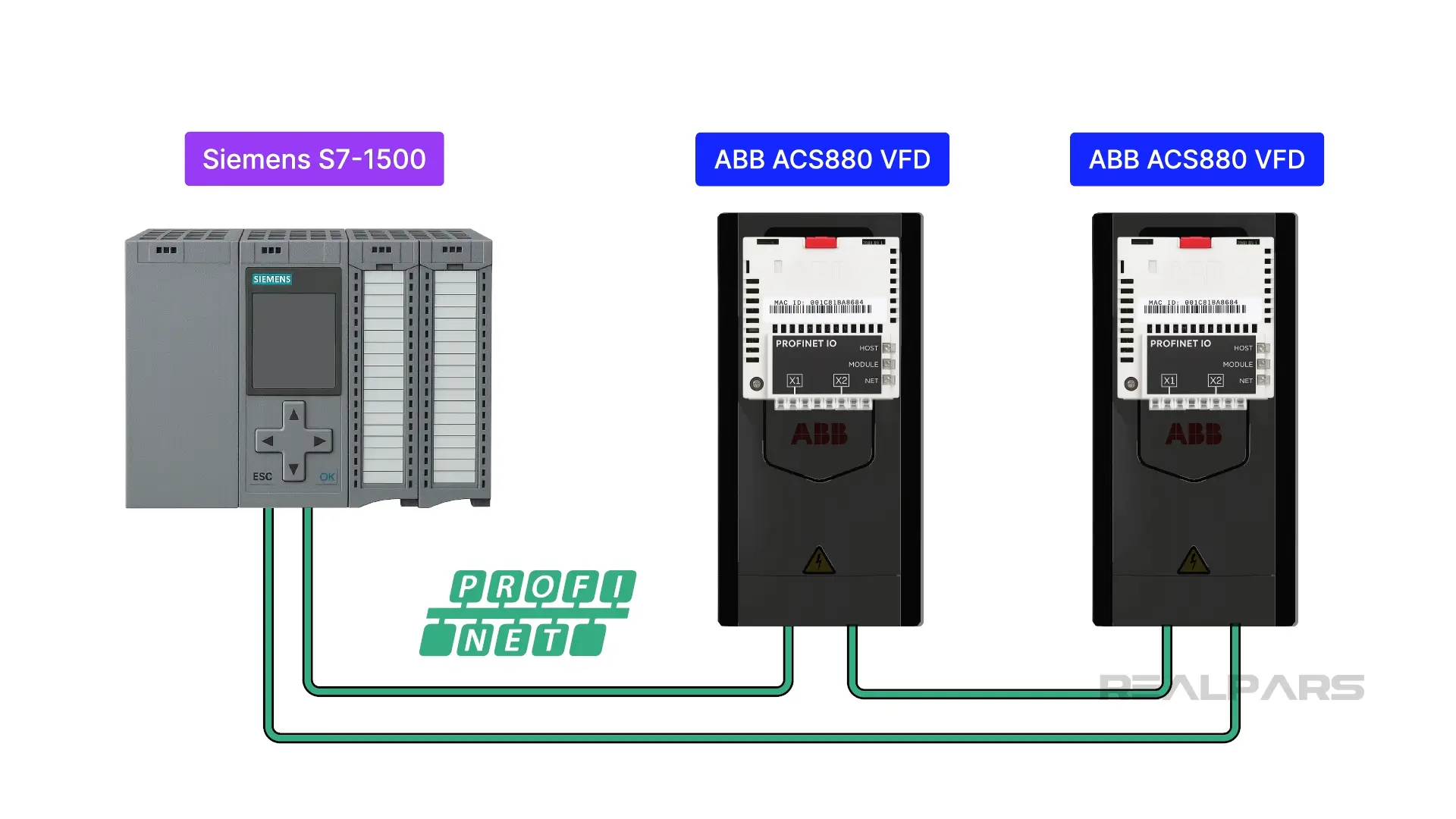
The FPNO-21 module also supports operation with redundant CPUs, data transfer via OPC-UA, and enhanced safety operation with ProfiSafe.
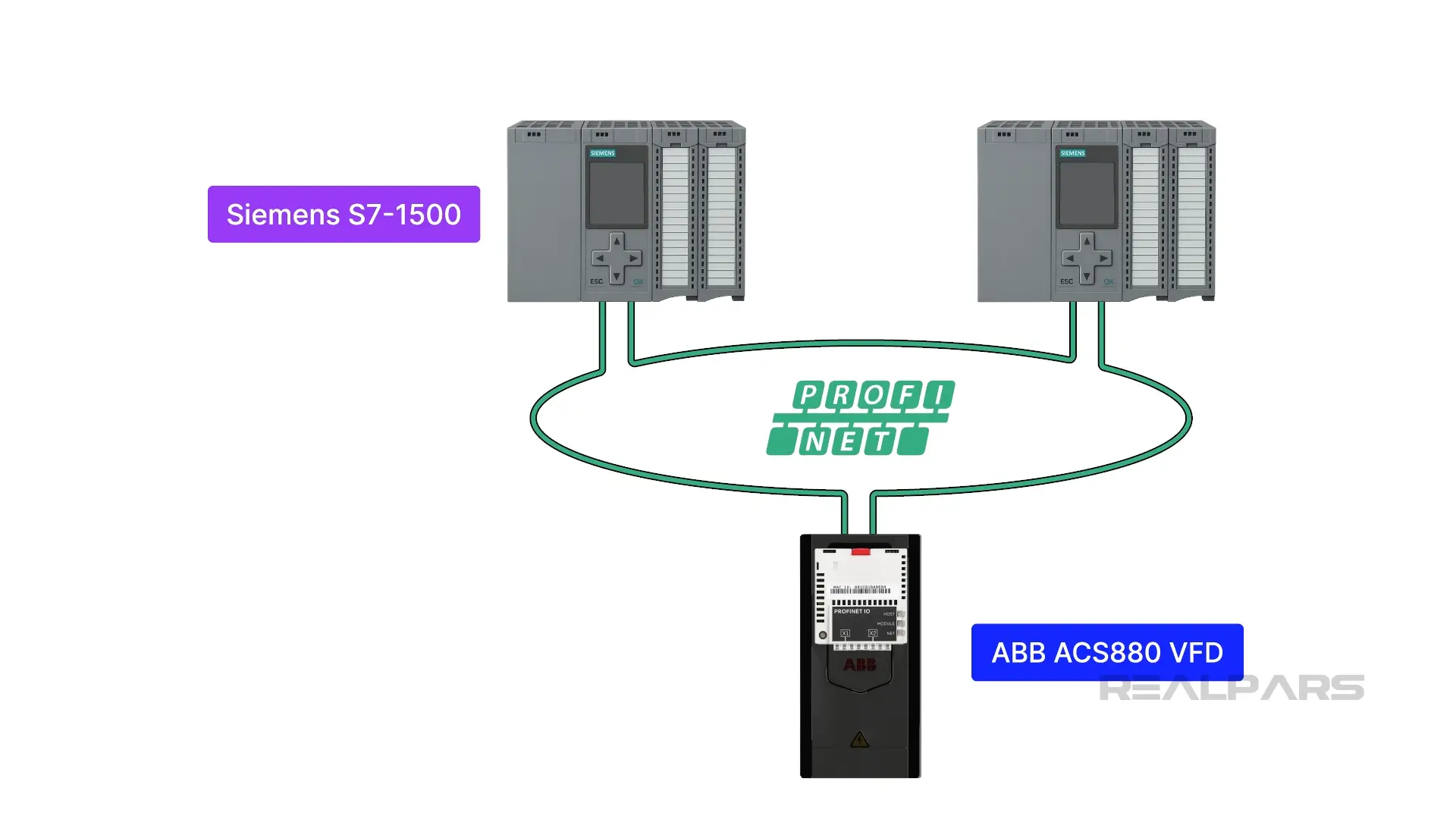
The S7-1500 CPU is my favorite CPU from Siemens. This is the top-of-the-line controller in the S7 family, and it provides the best in memory, speed, supported functionality, and ability for numerous network configurations. This includes the ability to connect to two different network protocols simultaneously.
The S7-1500 series is programmed with TIA Portal Professional and includes access to a comprehensive hardware catalog and interfaces to advanced technology modules for high-speed counting and multi-axis motion control, to name a few.
In this article, I will provide a step-by-step walkthrough of the integration of the ABB ACS880 & Siemens S7-1500 CPU. I will highlight the benefits of using Profinet for industrial automation and how it should be used for reliable plant operation.
Understanding Profinet
Profinet is an Industrial Ethernet protocol, based on TCP/IP, and uses the same structure as Ethernet/IP and Modbus TCP. Profinet is not directly interchangeable with these other Ethernet protocols, but it provides the same level of real-time, high-speed communication.
Profinet integrates seamlessly with common Ethernet routers, gateways, and network switches.
So, how can an S7-1500 controller and an ABB ACS880 VFD speak to each other? The answer is quite simple, but does require a little effort.
As with any communication protocol, data is exchanged by sending and receiving streams of data requests and responses. A way to parse, or interpret, those streams of data is required. This decoder ring is provided by a file called a General Station Description File, or GSD file.
GSD files are XML files that provide specific descriptions of the data contained in the Profinet string of data shared between the ABB ACS880 & Siemens S7-1500. It describes the communication parameters and diagnostic information.
Hardware and software connections
As I mentioned previously, ABB drive communication with Siemens PLC requires an FPNO-21 Profinet interface card. This card has two Profinet ports, which can be used in various ways.
In this example, I will connect the ACS880 and S7-1500 in a star configuration to a single network switch. The S7-1500 also has two Profinet ports, which are used for communication.
The S7-1500 is configured with TIA Portal Professional. The CPU and ACS 880 are placed in the hardware configuration of my TIA Portal project.
One of the Profinet ports on the CPU is connected to a Profinet port on the ACS880. If the hardware catalog does not contain the GSD file information for the ACS880 VFD, it will need to be added to the hardware catalog.
The required IP addresses for the CPU and VFD are set in the Hardware and Network configuration in TIA Portal.
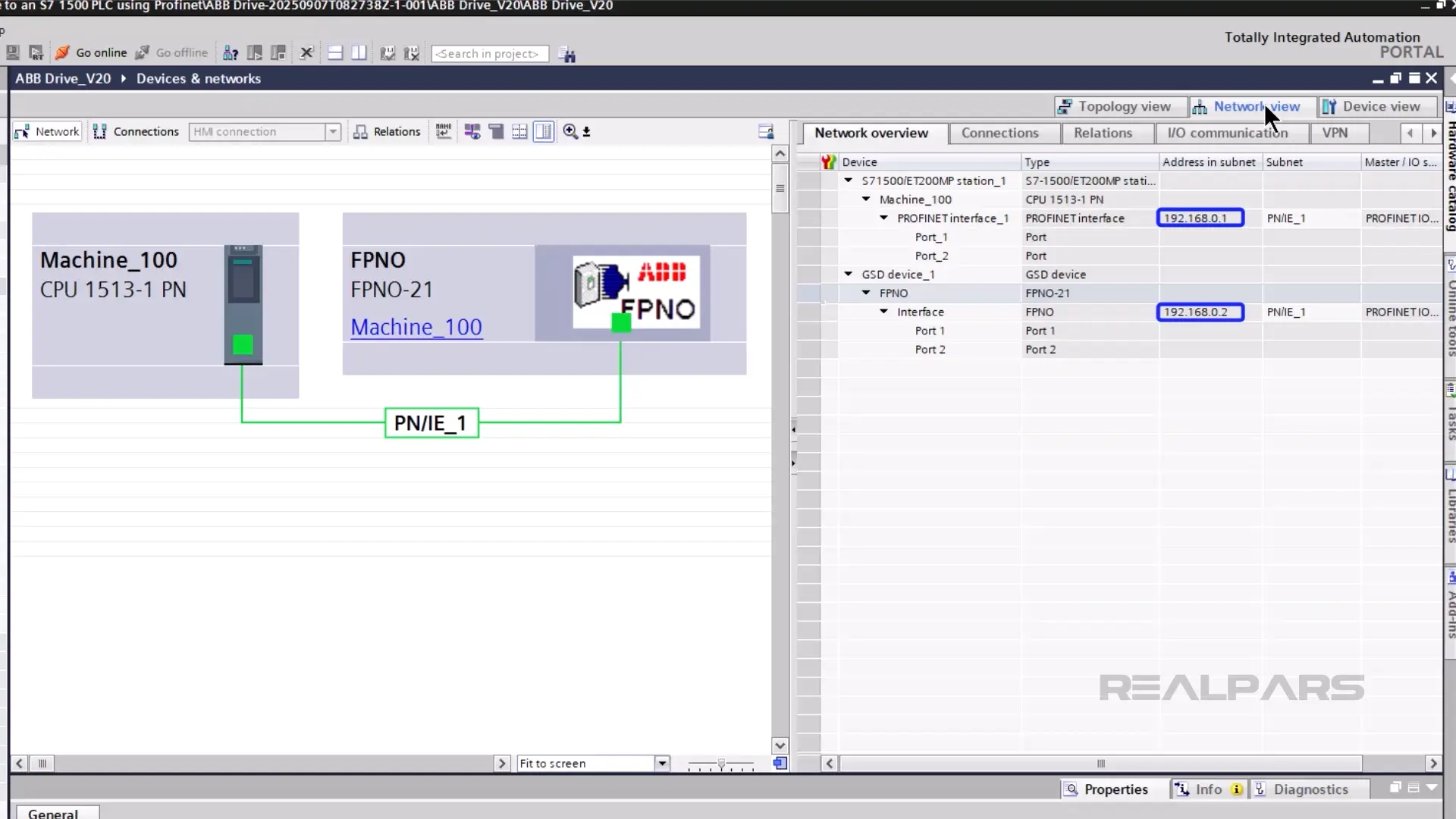
The PLC program uses a predefined Function Block to facilitate sending and receiving data to the drive.
The ABB Drive Function Block can be used in the Main OB or in an FC subroutine and allows for connection of values and variables to the block inputs and outputs. This makes monitoring the main functions of the drive easy during runtime.

The Function Block has a data block that contains the values and addresses of the various parameters that can be used in the PLC logic.
An ACS880 VFD contains hundreds of parameters that can be configured to provide the required functionality. This configuration is most easily accomplished using a software tool called Drive Composer.
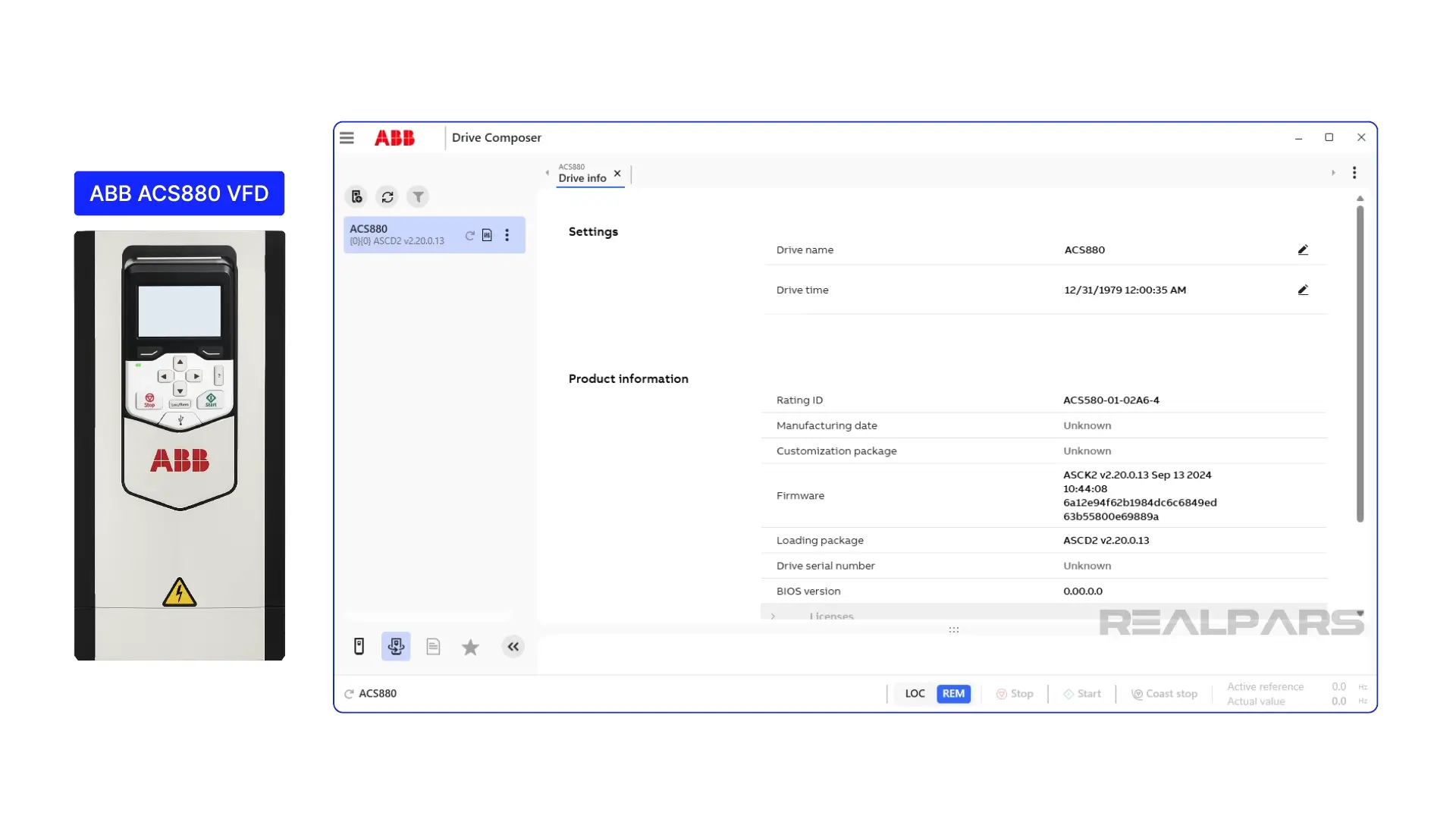
Drive Composer can also be used to monitor and provide diagnostic information about installed drives.
Drive Composer is used to enter motor data to match the motor nameplate data. Other parameters, such as acceleration time, braking method, and source of the drive speed setpoint, are entered.
An important configuration for the VFD is the IP address of the drive. This should be set to the same value as defined in the TIA Portal hardware and network configurations.

Commissioning the drive
Once the PLC and VFD are configured, the devices can be connected to the network switch and powered up.
The VFD program should be downloaded to the drive using Drive Composer, if necessary. The drive can be programmed while in a powered-on state. The drive configuration should be saved to ensure it is available in case reconfiguration is required.
The PLC program should be downloaded using TIA Portal. If the configurations were done properly and the IP addresses were correctly entered, the PLC and VFD should begin to communicate.
Real-time data should be visible in the PLC in the memory locations established when the drive was added to the hardware configuration.
To test the communication, a small program should be written in the PLC to start, stop, and adjust the speed of the VFD. Input registers can be monitored for drive status and actual speed.
Maintenance considerations
Once operating, minimal maintenance should be required. Both the ABB ACS880 & Siemens S7-1500 PLC have excellent diagnostics and will trigger alerts when issues are detected. These reliable devices and Profinet integration will provide efficient operation for many years.
WinCC or other HMI applications can be set up to provide operational and diagnostic screens and trends to verify proper operation of the VFD. Firmware and software updates are critical to maintaining cybersecurity and implementing performance improvements.
Summary
Using an ABB drive communication with Siemens PLC in a Profinet network is a smart and affordable way to take advantage of the features and capabilities of modern VFD drives and state-of-the-art PLC hardware.

